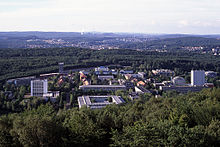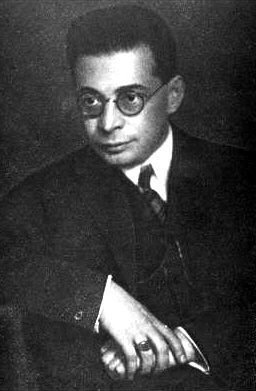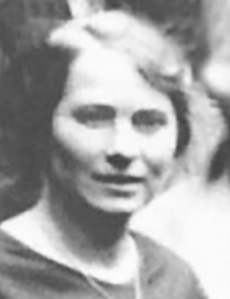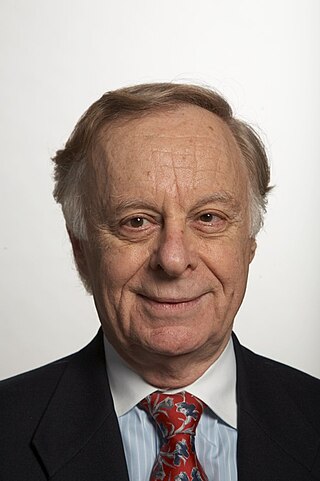
Rainer Krause (born October 5, 1942, in Gemmrigheim, Germany) is a German psychologist, psychoanalyst and researcher of human emotions.

Rainer Krause (born October 5, 1942, in Gemmrigheim, Germany) is a German psychologist, psychoanalyst and researcher of human emotions.
Rainer Krause has five siblings, both parents were physicians. He is married and has one son. [1] Krause lives and works in the Saarland area of Germany. Although he is retired as a professor of the Saarland University, he continues to participate in the public discourse.[ citation needed ]

In 1962 Rainer Krause graduated from high-school in Bietigheim. [1] At the end of his military service, in 1964, he began to study psychology at the University of Tübingen. In 1967/68 he continued his studies at the University of Zurich and in 1969, after returning to Tübingen, he graduated, majoring in psychology. From the beginning he was particularly interested in clinical and social psychology. He took his first position as an assistant at the University of Zurich and in 1971 he began his psychoanalytic training at the Psychoanalytic Seminar Zurich. One year later he received his doctorate in Tübingen. [2] In 1976 he habilitated in Zurich, where he received his teaching license with the so-called venia legendi in 1978.[ citation needed ] In 1980 he was appointed to the professorial chair of Clinical psychology at the Saarland University.[ citation needed ] From 1981 to 1983 he was managing professor of the psychology department.[ citation needed ] In 2009 Rainer Krause retired, becoming Emeritus. [3]
In 1985, as part of funding by the Deutsche Forschungsgemeinschaft, Rainer Krause organized the second European Conference on the Exploration of Facial Expressions. This marks the beginning of his extensive research and public recognition in the areas of affect and emotion and the question of how they find their manifestation in the facial expressions of people. In 1986 he was elected to the Board of Directors of the International Society for Research on Emotions. Various stays abroad were part of his early and later career, as well as his ongoing teaching and research.[ citation needed ]
Rainer Krause concentrated his diverse scientific activities on research of emotions and established himself in various professional societies in psychoanalysis. [4] In 1991 he organized the annual congress of the International Society for Research on Emotions. He completed a total of five projects funded by the German Research Foundation that focused on exchanges of emotions between healthy and mentally ill groups. Together with others he founded the Erasmus Programme for emotion research at the universities of Amsterdam, Bologna, Geneva, Paris, Madrid, Manchester and Würzburg. Since 1998 he has been supporting colleagues trained in Germany who are trying to establish a psychotherapeutic supply network in İzmir. In 2002 he established a psychotherapeutic ambulance system at the Saarland University where patients are treated until today. Since 2010 he has been a professor at the International Psychoanalytic University Berlin. There he is particularly involved in creating the infrastructure for research. As co-founder of the Saarland Institute for Psychoanalysis and Psychotherapy, established in 1991, he continues to work there as lecturer, training analyst and supervisor. [5]
Until 2005 Rainer Krause was co-editor of the Journal of Psychosomatic Medicine and Psychotherapy, the organ of the German Society for Psychosomatic Medicine and medical psychotherapy (DGPM). He was also co-developer of the Facial Action Coding System (FACS), a scientifically based technology of emotion recognition, which helps to make it possible to decode facial expressions.[ citation needed ]
His numerous international contacts were also helpful for his research on emotions in "intercultural comparison of emotion encoding and decoding using the example of French and German persons", his own research that he dedicated to this project in 1986/87. [1] In addition to teaching and research, Rainer Krause participated in the psychotherapeutic care of patients with various mental disorders. Although being critical of psychoanalysis, it is the theoretical basis of his research and treatment methods due to his belief that the "essence of the theory is indispensable". [6]
As part of a controversy among researchers of emotion, with respect to the types and numbers of affects that can be distinguished, Rainer Krause committed himself to "seven primary affects": joy, curiosity, fear, anger, sadness, contempt and disgust. [7] Primary affects are characterized by a "phylogenetically formed meaning". [8] He distinguishes them from "structural affects", such as shame or pride, which "require additional ontogenetic acquired knowledge". [8] Considering the effectiveness of all these emotions Krause describes the typical design of interpersonal relationships in different contexts. [9] "Emotions are contagious" is one of the formulas on which Krause bases his investigations. [10] He studies in detail which muscles are innervated in which affect, that in turn determines the facial expressions of the examinee. Accurate knowledge of the involved facial muscles – Krause calls it the "pattern of innervation" – allows to identify which emotion is brought into a communicative situation, such as in a conversation, a lecture or a discussion. Not always is this expression conscious or desired or intended by the person. Through the discrepancy between verbal communication and facial expression of emotions in communication, conflicts and misunderstandings can arise.[ citation needed ]
Using the example of smiling, Rainer Krause shows in a (German) presentation [10] the difference between a natural-looking and a phony smile, in which not the same muscles are involved. Significant in this regard is the fact that the muscles of the so-called "lower face" can be consciously controlled much easier than the muscles of the so-called "upper face". And with a smile that seems spurious, certain muscles of the upper face are not involved. As the "most common emotions that you get to see", Krause is calling contempt and disgust, which is likely to be contrary to the everyday theories of laypersons in affect-psychology. However, when people talk about their daily lives, the expression of joy is the most frequently shown emotion. Other situations show different rankings of the affects. Krause emphasizes that what is seen in the face of the person who imagines a specific affect is not inevitably what is experienced. Only in expression of joy is there congruence with what is visible in the face and what is internally experienced. Not so with the negative emotions: they are shown more often than experienced. Krause states that this will not allow information-sharing about the relationship between the two persons. He refers to old and often confirmed findings of Bühler (1934), [11] according to which in a communication between a "sender" and his "receiver" signs of expression should be interpreted differently: as an "expression for the internal status of the sender", or in his "appeal function" that "should bring the receiver to a specific action", or as a kind of "mental comment" about something "the sender is talking or thinking about". [12] Laughter is "combined with almost any other emotion" in contrast to other affective states. [10]
For Rainer Krause's 65th birthday in 2007 Tom Levold of the System Magazine summarizes some of the research results: "It is argued and substantiated by the empirical material that one can explain the persistence of mental disorders in part by the unconscious micro-affective behavior of mentally ill persons that brings their normal partners to confirm their unconscious assumptions about themselves and the world. This is shown in the behavior of various disorders." [13]
Harald Weilnböck cites in his book review of empirical research in psychoanalysis "the level of 'unconscious affective adaptation' that involuntarily takes place in all interactions." [14] He sums up a special research result of Krause with its implications for the therapeutic process: "In Krause's experimental design the facial expressions of laughter and smiles were captured in 15 therapeutic sessions in one-minute intervals and compared with the facial affect behavior of the therapist. The visual representation in form of two diagram-curves illustrates the enormous, 'unconscious emotional adjustment' as well as their development in the course of therapy. It can be precisely detected: the more it is possible for the therapist to withdraw the micro-affektive entanglement, the more successful the therapy is". [14]
Psychoanalysis is a set of theories and therapeutic techniques that deal in part with the unconscious mind, and which together form a method of treatment for mental disorders. The discipline was established in the early 1890s by Sigmund Freud, whose work stemmed partly from the clinical work of Josef Breuer and others. Freud developed and refined the theory and practice of psychoanalysis until his death in 1939. In an encyclopedic article, he identified the cornerstones of psychoanalysis as "the assumption that there are unconscious mental processes, the recognition of the theory of repression and resistance, the appreciation of the importance of sexuality and of the Oedipus complex." Freud's colleagues Alfred Adler and Carl Gustav Jung developed offshoots of psychoanalysis which they called individual psychology (Adler) and analytical psychology (Jung), although Freud himself wrote a number of criticisms of them and emphatically denied that they were forms of psychoanalysis. Psychoanalysis was later developed in different directions by neo-Freudian thinkers, such as Erich Fromm, Karen Horney, and Harry Stack Sullivan.

Otto Rank was an Austrian psychoanalyst, writer, and philosopher. Born in Vienna, he was one of Sigmund Freud's closest colleagues for 20 years, a prolific writer on psychoanalytic themes, editor of the two leading analytic journals of the era, managing director of Freud's publishing house, and a creative theorist and therapist. In 1926, Rank left Vienna for Paris and, for the remainder of his life, led a successful career as a lecturer, writer, and therapist in France and the United States.
Vegetotherapy is a form of Reichian psychotherapy that involves the physical manifestations of emotions.
Léon Wurmser was a Swiss psychoanalyst, Clinical Professor of Psychiatry at West Virginia University and a training and supervising analyst of the New York Freudian Society. He was formerly Professor of Psychiatry and Director of the Alcohol and Drug Abuse Program at University of Maryland, Baltimore.

Sabina Nikolayevna Spielrein was a Russian physician and one of the first female psychoanalysts. She was in succession the patient, then student, then colleague of Carl Gustav Jung, with whom she had an intimate relationship during 1908–1910, as is documented in their correspondence from the time and her diaries. She also met, corresponded, and had a collegial relationship with Sigmund Freud. She worked with and psychoanalysed Swiss developmental psychologist Jean Piaget. She worked as a psychiatrist, psychoanalyst, teacher and paediatrician in Switzerland and Russia. In a thirty-year professional career, she published over 35 papers in three languages, covering psychoanalysis, developmental psychology, psycholinguistics and educational psychology. Among her works in the field of psychoanalysis is the essay titled "Destruction as the Cause of Coming Into Being", written in German in 1912.
The Berlin Psychoanalytic Institute was founded in 1920 to further the science of psychoanalysis in Berlin. Its founding members included Karl Abraham and Max Eitingon. The scientists at the institute furthered Sigmund Freud's work but also challenged many of his ideas.

Vamık D. Volkan, M.D., DFLAPA, FACPsa, is a Turkish Cypriot born American psychiatrist, internationally known for his 40 years work bringing together conflictual groups for dialogue and mutual understanding. Among his many other honours, he is the president emeritus of International Dialogue Initiative (IDI).
Child psychotherapy, or mental health interventions for children refers to the psychological treatment of various mental disorders diagnosed in children and adolescents. The therapeutic techniques developed for younger age ranges specialize in prioritizing the relationship between the child and the therapist. The goal of maintaining positive therapist-client relationships is typically achieved using therapeutic conversations and can take place with the client alone, or through engagement with family members.
Psychoanalytic dream interpretation is a subdivision of dream interpretation as well as a subdivision of psychoanalysis pioneered by Sigmund Freud in the early 20th century. Psychoanalytic dream interpretation is the process of explaining the meaning of the way the unconscious thoughts and emotions are processed in the mind during sleep.
According to some music therapists, the use of Music in the therapeutic environment has an affinity with psychoanalysis in that it addresses obstructions in the mind that might be causing stress, psychic tension, and even physical illness. Music has been used, in conjunction with a psychoanalytic approach, to address symptoms of a variety of mental disorders, as well as forms of emotional distress, such as grief, loss, mourning, and trauma.
Metapsychology is that aspect of any psychological theory which refers to the structure of the theory itself rather than to the entity it describes. The psychology is about the psyche; the metapsychology is about the psychology. The term is used mostly in discourse about psychoanalysis, the psychology developed by Sigmund Freud, which was at its time regarded as a branch of science, or, more recently, as a hermeneutics of understanding. Interest on the possible scientific status of psychoanalysis has been renewed in the emerging discipline of neuropsychoanalysis, whose major exemplar is Mark Solms. The hermeneutic vision of psychoanalysis is the focus of influential works by Donna Orange.
Peter J. Loewenberg is an American historian and psychoanalyst, professor of “European cultural, intellectual, German, Austrian and Swiss history, political Psychology, integrating the identities of an historian and political psychologist with the clinical practice of psychoanalysis” at UCLA.

Harald Julius Alfred Carl-Ludwig Schultz-Hencke was a German psychiatrist and psychotherapist. After an initial introduction to psychoanalysis, with Sandor Rado as psychoanalyst, he was excluded from the German Society of Psychoanalysis because of, among other things, his divergent views on sexuality.
Robert Joseph Langs was a psychiatrist, psychotherapist, and psychoanalyst. He was the author, co-author, or editor of more than forty books on psychotherapy and human psychology. Over the course of more than fifty years, Langs developed a revised version of psychoanalytic psychotherapy, currently known as the "adaptive paradigm". This is a distinctive model of the mind, and particularly of the mind's unconscious component, significantly different from other forms of psychoanalytic and psychodynamic psychotherapy.

Henry Zvi Lothane is a Polish-born American psychiatrist, psychoanalyst, educator and author. Lothane is currently Clinical Professor at Icahn School of Medicine at Mount Sinai, New York City, specializing in the area of psychotherapy. He is the author of some eighty scholarly articles and reviews on various topics in psychiatry, psychoanalysis and the history of psychotherapy, as well as the author of a book on the famous Schreber case, entitled In Defense of Schreber: Soul Murder and Psychiatry. In Defense of Schreber examines the life and work of Daniel Paul Schreber against the background of 19th and early 20th century psychiatry and psychoanalysis.
Jean-Gerard Bursztein is a French psychoanalyst who has a doctorate in philosophy. He teaches psychoanalysis and practices in Paris. He was a student of Jean-Toussaint Desanti and worked on both philosophy of mathematics and philosophy of science. He continues to explore this field in studying the intrication of psychoanalysis and mathematics. On the basis of his practice he has written the following publications :

The Dream – Introduction into the Psychology of Dreams is a book by the Austrian psychoanalyst Herbert Silberer, written 1918 in Vienna and published 1919 by Ferdinand Enke in Stuttgart. His main intention was to provide a short, comprehensible guide on how to read and understand more sophisticated literature on dreams, as well as giving an appreciation of fundamental dream phenomena, because he considered both of them as lacking at this time. Silberer himself called this book the preamble for more sophisticated and complicated works, which could then build up on his own work.
The Sigmund Freud Institute (SFI) is a research institute for psychoanalysis located in Frankfurt, Germany. It was established in 1960 as an institute and training center for psychoanalysis and psychosomatic medicine. Renamed in 1964, it is now called after Sigmund Freud, the founder of psychoanalysis. Since 1995, the institution has been dedicated entirely to research.
Beate West-Leuer is a German professor, psychotherapist, consultant and coach.

Gernot Schiefer is a German psychologist and psychoanalyst. He is a professor of business psychology and head of the Competence Center for Qualitative Research at the FOM University of Applied Sciences for Economics and Management in Mannheim.
{{cite book}}: CS1 maint: location missing publisher (link)About psychoanalysis I am not so enthusiastic. I was rather saddened by the definitional and methodological confusion and levity with which each author developed new concepts and models, especially because I consider both the treatment and the core areas of the theory as irreplaceable.